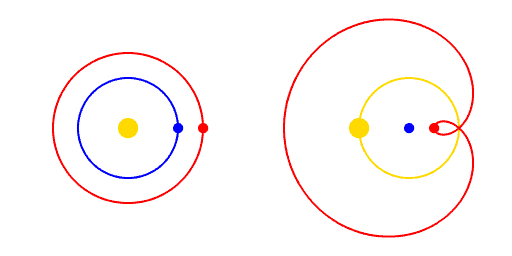Copernican Revolution
The Copernican Revolution was the paradigm shift from the Ptolemaic model of the heavens, which described the cosmos as having Earth stationary at the center of the universe, to the heliocentric model with the Sun at the center of the Solar System. Beginning with the publication of Nicolaus Copernicus’s De revolutionibus orbium coelestium, contributions to the “revolution” continued until finally ending with Isaac Newton’s work over a century later.
His book De revolutionibus orbium coelestium proposed a heliocentric system versus the widely accepted geocentric system of that time. Tycho Brahe accepted Copernicus's model but reasserted geocentricity. However, Tycho challenged the Aristotelian model when he observed a comet that went through the region of the planets. This region was said to only have uniform circular motion on solid spheres, which meant that it would be impossible for a comet to enter into the area. Johannes Kepler followed Tycho and developed the three laws of planetary motion. Kepler would not have been able to produce his laws without the observations of Tycho, because they allowed Kepler to prove that planets traveled in ellipses, and that the Sun does not sit directly in the center of an orbit but off to the side. Galileo Galilei came after Kepler and developed his own telescope with enough magnification to allow him to study Venus and discover that it has phases like a moon. The discovery of the phases of Venus was one of the more influential reasons for the transition from geocentrism to heliocentrism. Sir Isaac Newton's Principia concluded the Copernican Revolution. The development of his laws of planetary motion and universal gravitation explained the presumed motion related to the heavens by asserting a gravitational force of attraction between two objects.
